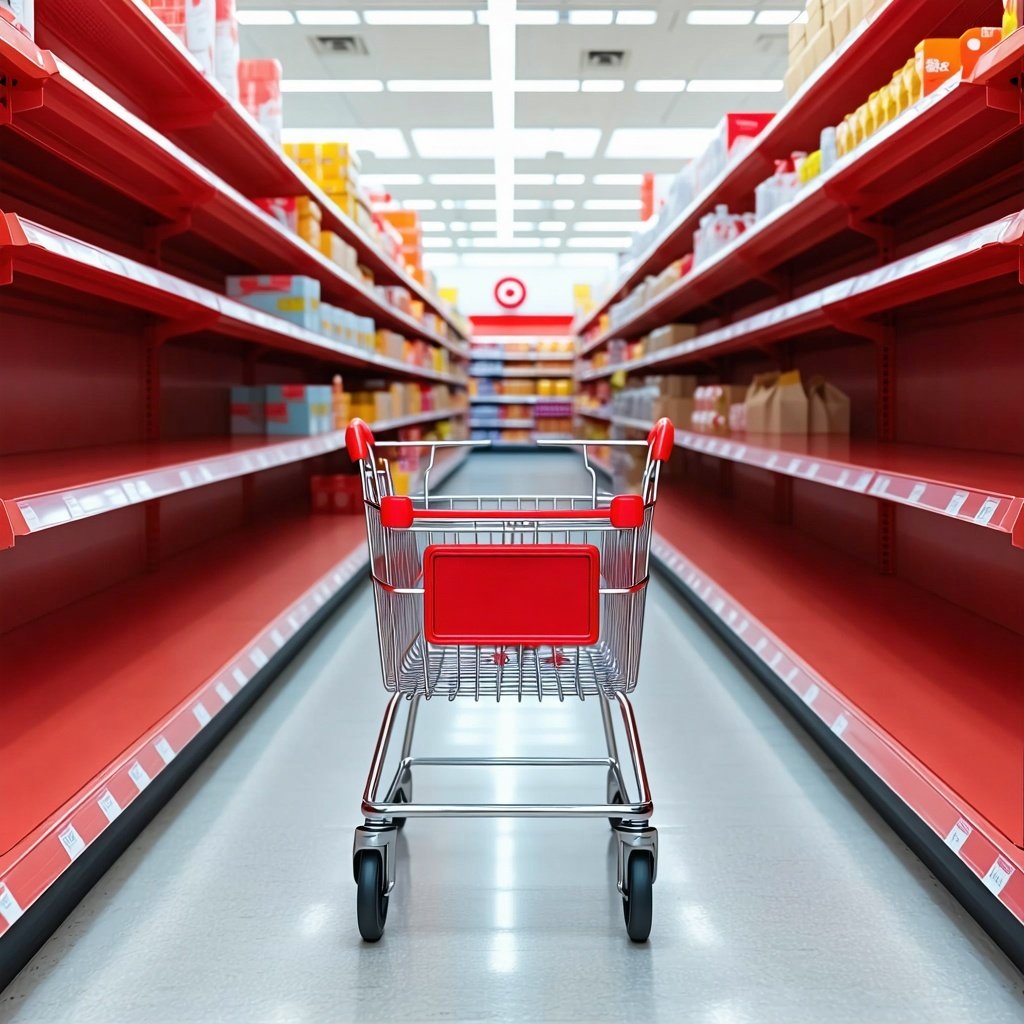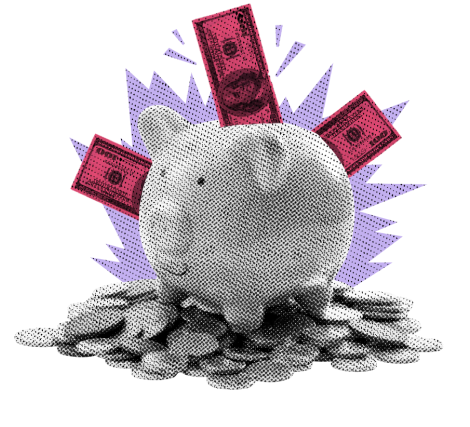
Today's tariffs could be tomorrow's empty shelves. Here's why fast negotiations are critical.
KEY TAKEAWAYS
- Tariffs are disrupting supply chains, echoing pandemic shortages.
- Supply chain disruptions can cause inflation beyond tariff price hikes.
- Just-in-time inventory models make U.S. retailers highly vulnerable.
- Supply-driven inflation is resistant to rate cuts—no easy fixes.
- Fast, effective trade negotiations are essential to minimize inflation risk.
MY HOT TAKES
- Inflation isn’t just about tariffs—it’s about broken supply chains too.
- COVID taught us hard lessons about global dependencies—and we forgot.
- Washington’s trade negotiations risk repeating pandemic-style inflation–they need to speed up.
- Supply-based inflation can't be solved with monetary policy tools.
- Consumers and companies are stuck between two inflationary choices.
- You can quote me: “Empty shelves aren’t just a COVID flashback—they’re a flashing warning sign of tariff-driven inflation.”
Messing with fire. I punctuated a lazy-by-design Sunday morning by accompanying my wife on a quick excursion to Target to pick up some sundries. I usually don’t get too involved as my job is to hunch over the bright red shopping cart and trail my wife’s winding through the aisles. On this particular trip I noticed something interesting. In fact, it wasn’t hard to notice. There were lots of empty shelves, leaving my wife’s fastidiously maintained shopping list wanting for check marks. ✔️
In an attempt to level the playing field in international trade, the Administration has launched an all-out assault on the US’s trade partners concentrating its fire power on the more egregious bad actors. Unfortunately, this noble cause comes with a high level of complication. Before we proceed, I am not going to talk about how the stock market has behaved in these past almost-100 days–we will hear plenty of that this week. The challenge is this: like it or not, for now at least, the US is highly reliant on imports. I am not talking about BMWs and fancy, luxury purses. I am referring to things that you take for granted in your everyday life. Things that you might expect to be manufactured in some quaint Hershey, Pa-like town in the US.
Do you remember scouting for toilet paper during the pandemic days? The good news is that it is made in the USA… from pulp imported from Canada and Mexico. How about Clorox wipes? Do you remember bartering with neighbors to get a container of those? Why were they so hard to come by? Well, to be fair, demand was through the roof because of COVID, and retailers did not anticipate the surge. BUT there was something else, that no one really talks about.
You would think that Clorox would have simply ramped up production to meet the increased demand. Target called up Clorox and said “send us more wipes, we can’t keep the shelves stocked!” In Forest Park, Georgia, someone went up to a dial and twisted it to 11. Easy squeezy, right? Not quite! Soon after, a phone call came from the supply warehouse and the supply manager said “yo, we are almost out of polypropylene, spunlace, non-woven fabric!” That’s the material the wipe is made of. The manufacturing supervisor yelled back into the phone, “so order more… duh,” following up with, “and you better hurry up because if you run out altogether, I will have to shut down my manufacturing plant while I wait.” The supply manager runs back to his desk and places orders for additional rolls of fabric from their suppliers in China, South Korea, and Taiwan, but there is a problem. China restricted exports of spunlace fabric and meltblown polypropylene. Uh oh!
In a nearby cubicle another supply manager was running into similar problems getting hold of the disinfecting liquid itself. She spent an entire afternoon speaking with her suppliers in China, Germany, and India. Ships and containers were simply in the wrong place. Moreover, many supplying countries restricted exports during COVID. The story gets more complicated as an intern mashed on his keyboard in yet another cubicle searching for alternative suppliers of plastic containers and lids which were also delayed. Even if the woven material showed up in time, by some miracle the chemicals for the disinfectant arrived, and by yet some further flash from the divine caused the containers to show up, without the lids from Mexico and China, the manufacturing plant would have to be shut down. But wait, this was no ordinary intern, he was the boss’s nephew, so he worked extra-hard to find a plastic injection molding facility in the Midwest that agreed to manufacture the lids. Somewhere in the midwest, someone frantically began to search for specialty resin only to end up on long-distance phone calls with China and Mexico. Get the picture? It is a picture of an empty shelf.
That is just one example of how, what you would think would be a simple supply chain can get jammed up from unnatural conditions. All that disruption caused supply and shipping costs to spike, and wouldn’t you know it, those increased costs became the basis for the consumer inflation that we all know too much about these days. It was not just disinfecting wipes. It was cars, computers, dishwashers, TVs, comfy shoes, and even food! It all started with a supply chain disruption, and it ultimately caused classic supply-push inflation.
But that was COVID, right? Things are different now. Well, unfortunately not really. In fact, supply chains are already being challenged. We know that many companies front-loaded orders for imports in an attempt to preempt the new import tariffs. That caused a disruption to shipping and ports. Now that some of the tariffs are in force, some manufacturers have simply stopped shipping to the US because the additional tariffs make their products prohibitively expensive to importers. The Wall Street Journal reported that Hapag-Lloyd, the number 5 shipper in the world, has experienced a ⅓ decline in bookings out of China. It is critical to realize that just about everything that we purchase in the US in some way relies on a supply chain that starts outside of the US.
Many companies like Target operate a just-in-time supply chain where minor disruptions can have significant impacts on supply and prices. Can companies switch manufacturers to combat these issues? Absolutely, but not overnight and certainly not without incurring costs.
We have spent a lot of time talking about how tariffs themselves will cause price increases on just about everything. What I want to highlight today is that supply chain disruptions can accentuate an already looming problem, causing further inflation. And unfortunately, there are no quick fixes for supply-based inflation–interest rate cuts are useless against it.
Now, there is some good news. The President is now negotiating with many US trade partners. It is also clear that many of them are willing to negotiate. Hopefully those negotiations can be wrapped up quickly, because, as we learned in the pandemic, shutting down and restarting a supply takes a toll… on prices… on consumers.
As I rolled our mostly empty shopping cart into the over the counter drugs aisle and looked at the scant supply of Ibuprofen, I couldn’t help but wonder. If I were a purchasing manager and my cost for ibuprofen just increased by A LOT, due to tariffs, what would I do? I could a) order the same $ amount (less units) to maintain my overall margins, or b) order the same units for more money and pass the extra tariff costs on to my consumers to maintain unit margins. Well, we know that selection ‘b’ is inflationary, how about selection ‘a’? Well, that would cause supply outages, ultimately leading to–you guessed it–inflation. It is simply impossible to avoid.
We want a level playing field in international trade. Can we get it without inflation? It will be tough, but any negotiation would have to be concluded promptly to avoid pandemic-like supply chain rifts. Let’s go Washington DC, get those deals done quickly! We are counting on you.
FRIDAY'S MARKETS
Stocks gained on Friday as investors held on to hope that trade negotiations would usher them back to happy days and rallying stocks. Alphabet put wind back into the sails of tech investors with a solid beat and unchanged guidance. So goes tech, so goes the S&P 500 Index and Nasdaq. Bond yields pulled back on optimism that pain will be avoided by the President’s willingness to negotiate trade deals. Sentiment was revised upward but still lower than March’s numbers.

NEXT UP
- No major economic releases today, but the week ahead will be jam packed. We will get lots of earnings which include at least four of the Magnificent 7–you know the stocks that used to bring us great returns. 😉 We will also get a number of important econ releases, including JOLTS Job Openings, more housing numbers, Consumer Confidence, the first read of Q1 GDP, Personal Spending, PCE Price Index, ISM Manufacturing, and the monthly employment report. Download the attached economic and earnings calendar to be one step ahead of your mother-in-law; mine knows everything. 😉
DOWNLOAD MY DAILY CHARTBOOK HERE 📈
.png)

